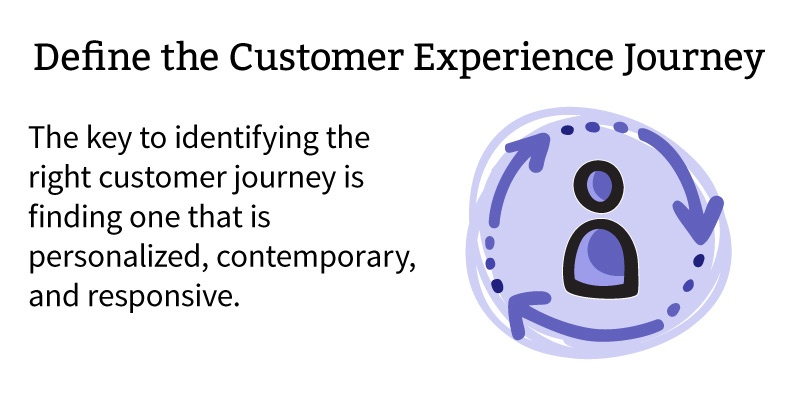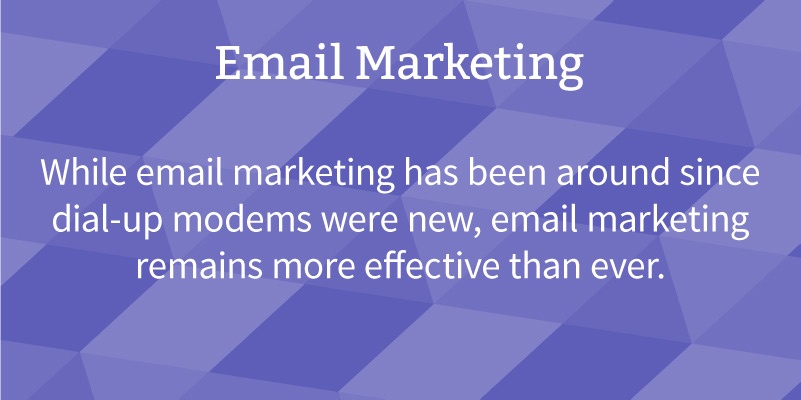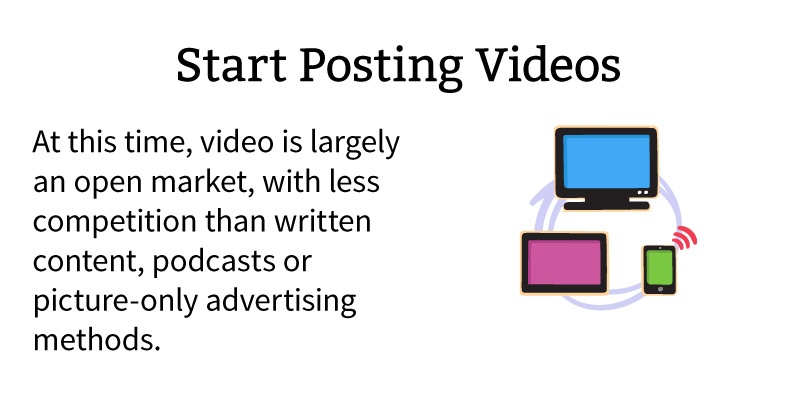When we think of marketing, many of us think about clever jingles, funny commercials, or jazzy new campaigns featuring a celebrity. But what most customers desire from marketing isn’t wit, humor or even polish. Rather, according to a 2016 Salesforce Marketing report surveying over 4,000 top marketers, what customers crave from companies is consistency.
This takes work to achieve. To keep messaging and call-to-action functions consistent, it requires discipline across web search, print and web marketing materials, customer support, sales functions and community-building activities. The highest-performing marketing teams no longer concentrate on customer mindset as much as they do connecting touchpoints in a consistent manner along the customer journey.
Keeping consistency in mind, here are 10 of the latest marketing trends for 2016 that your organization should be considering.
1.) Adopt the right technology.
Successful marketing teams not only adopt technology, but they maximize its usage.
Top marketing teams regularly employ the following forms of technologies:
- Predictive analytics
- Data targeting and segmentation
- Marketing automation
- Employing lean/agile methods
- Monitoring and analytics tools
- Customer relationship management (CRM) tools
- Tag management tools
- Data management platforms (DMP)
- Content delivery networks (CDN)
- Conversion optimization tools
- Campaign management tools
- Email marketing platforms
- Mobile optimization tools
- Advertising networks
- Remarketing solutions
- Search engine marketing tools
Determining the right fit for your business is crucial. Although many companies offer smaller, software-as-a-service-based tools as software solutions, downloads, or as a cloud-based subscription services, having one enterprise solution like Salesforce Marketing Cloud can be more elegant. Smaller tools can be tenuous to integrate with one another and can make it difficult to keep messaging consistent.
2.) Align with business leadership.
The highest-performing marketing teams have support from the top down. When this buy-in occurs from business leaders, the marketing is more likely to be consistent with the company’s mission statement, products and internal messaging and processes. According to a 2016 Salesforce Marketing report, buy-in from executive teams also generally results in marketing budget increases for both tools and campaigns.
3.) Clearly define the customer experience journey with omni-channel experiences.

Customer journeys need to be consistent across mobile, email, social and the web. The key to identifying the right customer journey is finding one that is...
- Personalized. The right customer journey is personalized to the individual user.
- Contemporary. A customer journey should be contextual to the moment.
- Responsive. Customer journeys should be established for input or buy-in at every step.
Salesforce Marketing Cloud can incorporate CRM and other data for personalization so the customer journey presents the right content, in the right style, at the right time to drive conversions.
4.) Create a single view of the customer.
The key to a seamless customer experience is to create a shared, consistent view of the customer. Building bridges between research and development, sales, service, management and marketing helps to create a consistent way to view customers and their needs—and, in turn, for consistent messaging to be conveyed from all facets of your organization to the customer. This level of collaboration is essential in determining and deploying the right marketing strategies for your business.
5.) Stay on top of mobile.
Over the past decade, there has been 98% growth in mobile and 110% growth in SMS usage (Salesforce). Customers who engage with your organization via mobile tend to be pre-engaged and familiar with your business, and hence, more ready to buy once they arrive. In fact, the most effective mobile strategies are exclusive deals and mobile programs. That’s why it’s important Salesforce Marketing Cloud allows for you to use SMS, MMS, push notifications and group messaging to contact customers.
6.) Stay on top of email marketing.

While email marketing has been around since dial-up modems were new, email marketing remains more effective than ever. Unlike on mobile, customers viewing email marketing campaigns are not necessarily ready to buy. Some are engaged by entertaining video ads, branded events or exclusive invitations, whereas others are more enticed by company news, upcoming product announcements or when encouraged to give feedback. Salesforce Marketing Cloud tracks key statistics, including bounce rate, open rate, time on site and clickthrough rate.
7.) Engage customers with social media advertising.
Top marketers excel at responding to customers on social media right away. However, with campaign management and analytics needed on social media, mobile, email and the web, time can be a consideration. Enterprise platforms such as Salesforce Marketing Cloud are superior at offering automation and social listening tools across all networks so you can focus on what you need most: Personalized communication directly with your customer.
8.) Think outside the box with content.
Creating engaging content requires advanced planning, deep audience knowledge and investment in quality writers, editors, designers and videographers. Top firms report developing content at least 2-3 times per week, as opposed to 1x or less per week for underperformers (Salesforce). Putting personalized, engaging content forth to your audience, monitoring analytics closely and paying attention to micro-content (like customer comments) provides fuel to keep your marketing engine running. Utilizing Salesforce Marketing Cloud tools for content curation, content distribution, content optimization and content measurement can keep you ahead of the curve.
9.) Employ lean/agile methodology.
Although lean/agile methodology is traditionally thought of solely for software development and IT, these techniques are gaining momentum in marketing circles. Modern marketing is becoming increasingly more like tech, with the need to create remarkable experiences, adapt to change, monitor individuals and interactions, conduct small experiments and religiously utilize data and responsiveness. With Salesforce Marketing Cloud, this type of logic is built-in to the utilization of the platform, creating transparency, rapid iterations and feedback loops.
10.) Start posting videos.

Video has grown exponentially on the desktop, tablet and mobile for the past few years. At this time, video is largely an open market, with less competition than written content, podcasts or picture-only advertising methods. Video is an essential part of the consistent integration strategy because it can be transcribed to audio, text and images to be utilized in other channels. More importantly, video content can be created for every stage of the buying cycle and can be formatted and syndicated across multiple platforms, including website, blog, email, Facebook, Twitter, Instagram, YouTube and more. And like text or image-based content, key metrics can also be tracked for video in Salesforce Marketing Cloud, including clickthrough rate, number of views and the length of time a video is watched.
11.) Stay on top of your analytics with goal tracking.
Defining and redefining success are crucial. Not all forms of internet marketing are conducted to drive sales. Some marketing efforts should be conducted to improve customer satisfaction, brand awareness, channel expansion, engagement on the organization’s social media channels and blog and to build better customer relationships.
Goal tracking should be done for each and every proactive action in Salesforce Marketing Cloud. Every campaign and component therein should be tracked and measured against the rest to ensure that the digital marketing campaign is a success.
Bottom Line
Defining success, developing the right content, amplifying content on popular channels, fostering improved alignment through all departments of your organization and arming your team with the right technology to support workflows and goals is the recipe for a successful enterprise marketing strategy in 2016.
The Salesforce Marketing Cloud is a proven tool in achieving all of these aims, but to best utilize its power, choose a proven partner. Summa boasts deep experience in creating fast, flexible, reliable and secure connectivity between cloud, on-premises, new and legacy core applications, as well as IoT and mobile devices. As both the implementation partner and the customer engagement solution architect for our clients, we achieve business results using Marketing, Sales and Service Clouds and other platform components of Salesforce.com. In 2015, we won the Salesforce.com Partner Innovation Award for Non-Profit Success for our work innovating new fundraising, donor and volunteer management solutions for The United Way of Southwestern PA. Plus, Salesforce.com is one of Summa's fastest-growing practice areas. As Gold Partners, we're excited to do more, excel more and produce more transformative solutions for our clients.




